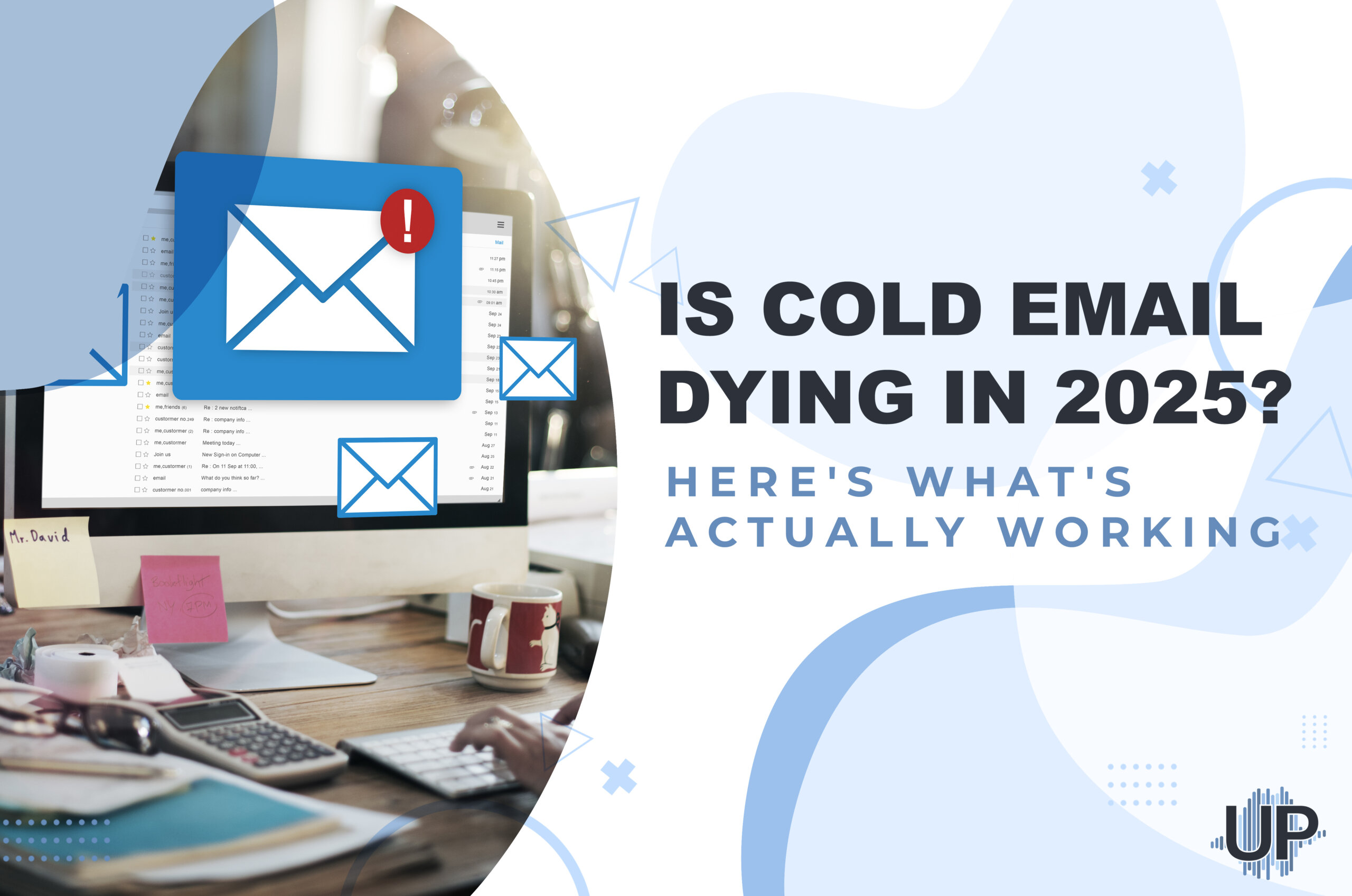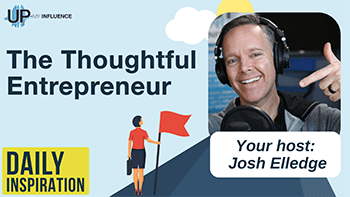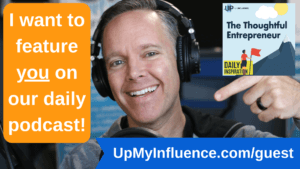
Cold email has long been a cornerstone of outbound marketing—(The average cold email response rate is 5.1%, with the average open rate being 27.7%. Last year, these numbers were 7% and 36%, respectively.) but in 2025, its effectiveness is under fire. With new email privacy laws, enhanced spam filters, and audiences that are savvier (and more skeptical) than ever, traditional cold outreach is hitting more walls than inboxes. The question on everyone’s mind: has cold email finally run its course? The answer isn’t black and white. What’s dying isn’t cold email itself—it’s the outdated tactics that no longer resonate. Spray-and-pray blasts? Dead. Generic templates? Ignored. In today’s landscape, authenticity, relevance, and timing are the currencies of attention. Email isn’t going away, but how we use it must evolve. This article dives into what’s changed in 2025—from the rise of intent-based outreach to creative multichannel strategies—and uncovers what actually gets responses now. If you’re still sending cold emails like it’s 2018, it’s time for a serious upgrade. Let’s unpack the future of outreach.
The Evolution of Cold Email: Then vs. Now
In the early days of digital prospecting, cold email was a high-performing, low-effort channel. A simple, semi-personalized message could open doors, spark conversations, and even close deals. But in 2025, the landscape is far more competitive—and cluttered. Audiences are bombarded with messages that all start to sound the same, and attention spans are razor-thin. Cold emails that once worked—like “quick question” subject lines or generic value props—now fall flat. Successful senders today are doing more than just reaching out; they’re crafting narratives. For instance, instead of pitching a software tool out of the blue, top performers reference a mutual connection’s podcast, a recent funding announcement, or even a prospect’s social post to anchor relevance. What worked then feels outdated now. Cold email hasn’t died—it’s just matured into a more intelligent, context-aware form of communication.
Major Hurdles for Cold Email in 2025
In 2025, cold email faces several roadblocks that make traditional strategies increasingly ineffective. One major challenge is the growing sophistication of spam filters and email algorithms. With more stringent privacy regulations and intelligent filtering systems, even legitimate cold emails are at risk of being diverted straight into the spam folder. Another hurdle is the oversaturation of inboxes—people receive countless cold emails every day, and many have grown numb to generic outreach. For instance, a prospect might ignore an email offering a service that promises to “increase revenue” without any specific context or connection. Moreover, many prospects are now more guarded about sharing information, as data privacy concerns have reached new heights. As a result, cold email today requires hyper-targeted personalization and deeper knowledge of the recipient’s needs to break through the noise and gain attention.
Stricter Spam Filters & Email Deliverability Issues
As email marketing evolves, one of the toughest challenges in 2025 is navigating stricter spam filters and improving email deliverability. With increasing awareness around data privacy, email service providers have fine-tuned their algorithms to detect and block unsolicited emails more effectively. While this presents a hurdle for cold outreach, it also presents an opportunity for businesses to rethink their approach. Rather than relying on blanket, generic messaging, today’s cold emails must be highly personalized and context-driven. For example, a well-crafted email referencing a recent article the recipient wrote or a milestone their company reached is more likely to get through than a generic sales pitch. The key to success in this environment is authenticity and value. By focusing on building genuine relationships and offering clear benefits upfront, businesses can overcome deliverability challenges and ensure their emails land where they need to—straight in the inbox.
GDPR, CAN-SPAM & Compliance Hurdles
As email marketing continues to grow, compliance with regulations like GDPR and CAN-SPAM has become a significant challenge, especially for cold email campaigns. These laws are designed to protect consumer privacy, and while they have made email outreach more transparent, they also place the onus on businesses to ensure their communications are respectful and lawful. However, these hurdles can be seen as an opportunity to build trust with recipients. For example, including clear opt-out options and ensuring recipients know why they are being contacted can actually increase the quality of your interactions. Personalization also helps in complying with these regulations—if your emails are relevant to the recipient’s specific needs and interests, you’re not only more likely to avoid legal trouble, but you’ll also see better engagement. Rather than viewing GDPR and CAN-SPAM as obstacles, businesses can embrace them as a chance to refine their outreach and foster stronger, more authentic relationships.
Declining Open & Response Rates
Declining open and response rates are among the most significant barriers for cold email marketers in 2025. With the growing sophistication of email filters and the increasing number of unsolicited messages filling inboxes, standing out has become harder than ever. The “one-size-fits-all” approach that once worked is no longer effective. Imagine receiving a cold email with a subject line like “Increase Your Sales Today”—it’s likely to be ignored or deleted immediately. On the other hand, an email that directly addresses a recent challenge faced by the recipient or references a mutual interest is far more likely to engage. By moving away from generic outreach and focusing on relevance and personalization, businesses can break through the noise. Though open and response rates are dropping, the opportunity still exists for those who are willing to adapt their strategies and craft emails that speak directly to their target audience’s needs and interests.
What’s Actually Working in Email Outreach?
While cold email in its traditional form may be faltering, the future of email outreach lies in precision, personalization, and multi-touch strategies. In 2025, successful campaigns are those that move beyond generic messaging and focus on crafting emails that truly speak to the recipient's unique needs. For example, instead of sending a general “We help businesses grow” message, consider highlighting a specific pain point a company may be facing, such as inefficient workflows or missed revenue opportunities, and offer a tailored solution. Combining email with other channels—like social media outreach or direct mail—also enhances effectiveness. By nurturing relationships through a series of thoughtful, value-driven touches, businesses can achieve much higher engagement rates. The key is no longer just the cold email, but how it fits within a broader, more strategic approach that prioritizes trust, relevance, and genuine value.
Cold Email + Podcasting: A Winning Combo for Business Growth in 2025
While cold email still has its place in outreach, combining it with podcasting in 2025 presents a powerful way to boost business growth. Podcasting allows you to build a personal connection with your audience, offer value through thought leadership, and position your brand as an authority in your field—all while still leveraging cold email for targeted outreach. For example, imagine reaching out to a potential client via cold email with a personalized message about a recent episode of your podcast that addresses a challenge they're likely facing. This blend of cold email and podcasting not only offers immediate value but also creates a long-term engagement strategy. By providing insights and fostering conversations, you’re not just making a cold outreach, but inviting your prospects to connect on a deeper level. For businesses looking for Cold Email Alternatives, podcasting can be an excellent complement to more traditional methods. For tips on starting a business podcast, check out this Related Read.
How to Integrate Podcasting into Your Marketing Mix?
In 2025, podcasting has become an essential tool for brands looking to amplify their outreach and connect with audiences on a deeper level. Integrating podcasting into your marketing mix is a strategic way to build authority and create long-term relationships with prospects. Start by incorporating your podcast episodes into your cold email campaigns—share a relevant episode that addresses a pain point or aligns with the prospect’s interests. This approach provides immediate value and positions you as a thought leader in your field. Additionally, use your podcast to drive traffic to your website, social media platforms, or lead magnets, creating multiple touchpoints for potential clients. As podcasting grows in popularity, its ability to humanize your brand, build trust, and provide evergreen content makes it a powerful addition to any modern marketing strategy. It’s not about replacing cold email, but enhancing it with richer, more engaging content that resonates with your audience.
Case Studies and Success Stories
In the evolving world of cold email, one strategy that continues to gain traction in 2025 is the integration of case studies and success stories into outreach efforts. Prospects are more likely to engage with emails that showcase real-world results from businesses similar to their own. For instance, an enterprise software company might include a brief success story in their cold email, detailing how a client in the same industry used their platform to streamline operations and reduce costs. By demonstrating how their solution has worked for others, they immediately build credibility and trust. This tactic not only makes the cold email more engaging but also helps recipients visualize how your product or service can solve their specific problems. In a crowded inbox, an email that includes a relevant case study stands out as both informative and valuable, creating a stronger foundation for further conversation and collaboration.
Conclusion
Cold email may be evolving, but it’s certainly not dying. In fact, with the right approach, it can still be a vital part of your marketing strategy in 2025. By focusing on personalization, integrating other communication channels like podcasting, and utilizing real-world success stories, businesses can overcome the hurdles of declining open rates and increasing privacy regulations. The key is understanding that cold email today requires more effort and strategy than before, but it’s still a powerful tool when used effectively. To further optimize your outreach and see measurable results, explore the resources available at B2B Lead Generation Services and take your marketing to the next level with expert guidance tailored to your business needs.
Frequently Asked Questions
As cold email continues to evolve, many businesses are turning to complementary strategies, like podcasting, to enhance their outreach efforts. If you're considering integrating podcasting into your marketing mix, you may have some common questions. For instance, what types of podcast content work best for B2B audiences? Additionally, how can you repurpose podcast content to maximize its value across various channels? There are also legal considerations for cold email outreach in 2025 that must be addressed to stay compliant with privacy regulations and avoid penalties. Lastly, if you’re looking to promote a podcast alongside your cold email campaigns, you might wonder: what’s the best way to do this to maximize impact? These are important questions, and understanding the answers will help you navigate this shifting landscape successfully.
What types of podcast content work best for B2B audiences?
When creating podcast content for B2B audiences, it’s essential to focus on topics that provide real value and insights. Business professionals are looking for actionable advice, industry trends, and expert opinions that can directly impact their decision-making. For example, sharing case studies that highlight successful business strategies or interviews with thought leaders in your field can engage listeners who seek practical knowledge. Additionally, discussions about common challenges within the industry, along with solutions or best practices, resonate well with listeners who want to stay informed and improve their own business operations. By positioning your podcast as a source of valuable, relevant content, you can build credibility and attract a dedicated B2B audience eager to learn and grow.
How can I repurpose podcast content to maximize its value?
Repurposing podcast content allows you to get more mileage out of the hard work you’ve put into creating valuable episodes. One great way to do this is by transforming each podcast episode into multiple content formats. For example, a detailed podcast interview can be turned into an informative blog post, with key insights and actionable advice pulled directly from the conversation. You can also extract compelling quotes and share them as visual graphics on social media to engage your audience and drive traffic back to the full episode. Another strategy is to create video snippets or highlight reels from podcast segments, which can be shared across platforms like LinkedIn or YouTube. By repurposing content in this way, you maximize its reach, provide different access points for your audience, and ensure that your valuable content continues to drive engagement.
What are the legal considerations for cold email outreach in 2025?
Legal considerations play a crucial role in shaping cold email outreach in 2025. With privacy regulations like GDPR in Europe and the CAN-SPAM Act in the U.S., businesses must prioritize compliance to avoid penalties and build trust with recipients. This means obtaining consent before sending marketing emails and providing clear and accessible opt-out options in every message. For example, if you’re reaching out to potential clients in different regions, it’s important to ensure that your outreach aligns with local laws, such as giving individuals the right to control their data. Additionally, ensuring transparency in your messaging—like properly identifying who you are and why you’re contacting them—can make your emails more credible and less likely to be flagged as spam. By respecting these legal boundaries, businesses not only protect themselves but also demonstrate their commitment to ethical marketing practices.
What’s the best way to promote a podcast to complement cold email efforts?
Legal compliance is a critical factor when executing cold email campaigns in 2025, especially as privacy laws continue to tighten globally. To ensure you’re operating within legal boundaries, it’s important to familiarize yourself with regulations such as GDPR and the CAN-SPAM Act, which mandate that businesses obtain consent before sending marketing emails and offer a simple way for recipients to opt out of future messages. For instance, if you're reaching out to a potential partner, you must not only provide an unsubscribe link but also be transparent about how their contact information was obtained. Additionally, you must avoid sending unsolicited emails that could be deemed intrusive or irrelevant. By understanding and adhering to these legal considerations, businesses can maintain a positive reputation, minimize risk, and increase the chances of engaging with prospects in a respectful and legally compliant way.


